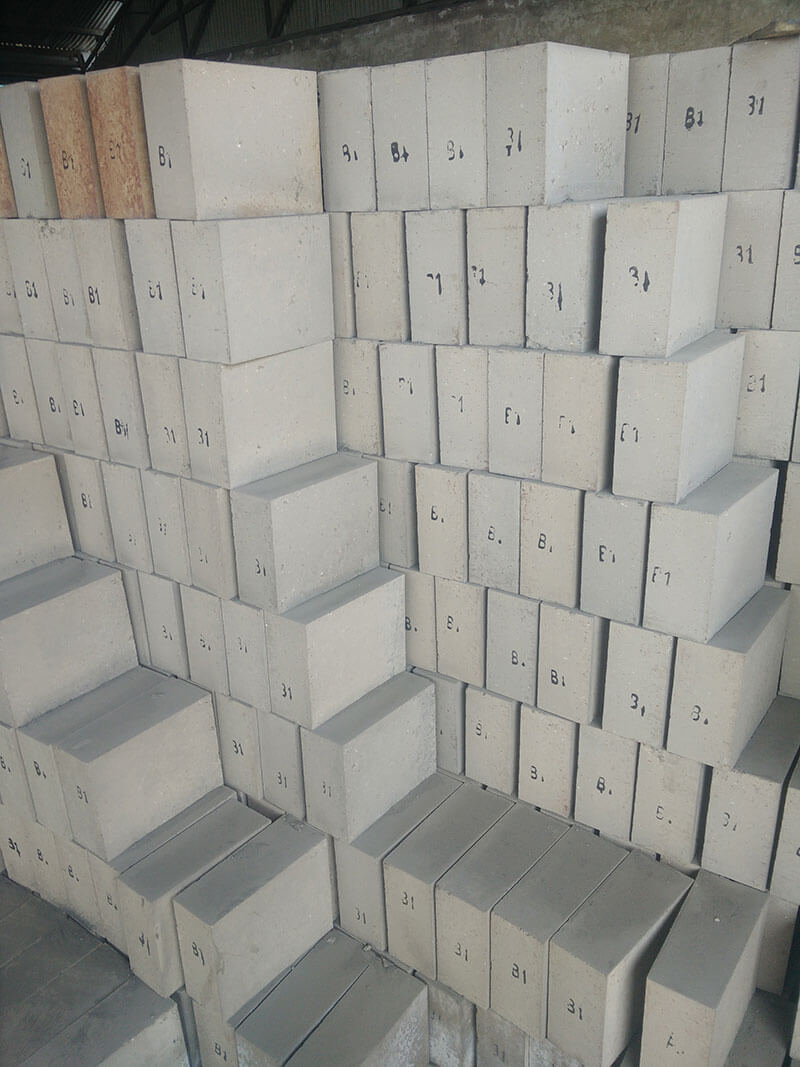Phosphate Bonded High Alumina Brick Characteristics
Compared with ceramics bonded high-alumina bricks, phosphate bonded high alumina bricks have better spalling resistance, but refractoriness under load temperature and corrosion resistance of phosphate bonded high alumina bricks are both lower. So some fused corundum or mullite can be added to raw material to improve corrosion resistance and refractoriness under load temperature.
 Phosphate Bonded High Alumina Bricks Technical Index
Phosphate Bonded High Alumina Bricks Technical Index
| Item | Phosphate bonded high alumina bricks | Alumina phosphate bonded high alumina bricks |
| Al2O3 % > | 76 | 78 |
| Fe2O3 % < | 3.2 | 3.2 |
| CaO % < | 0.6 | 0.6 |
| Cold crushing strength Mpa > | 65 | 70 |
| Bulk density g/cm3 | 2.65 | 2.70 |
| Refractoriness under load ℃ > | 1350 | 1300 |
| Refractoriness ℃ > | 1790 | 1790 |
Phosphate Bonded High Alumina Bricks Application
Phosphate bonded high alumina bricks adopt 5~10mm bauxite clinker aggregate as main raw material, about 50% phosphate solution as a binder, it has higher porosity, at the same temperature condition, it has a relatively lower modulus of elasticity, as well as better thermals, shock resistance. Phosphate binding high alumina bricks are mainly used for the pre-combustion zone, decomposition zone and kiln door shield of rotary cement kiln, and cooling machine inner linings, where bricks are easy to fall off. Abrasion-resistant high alumina bricks adopt bauxite clinker, less than 5mm as aggregate, aluminum phosphate as a binder, it is more compactly pressed, with high mechanical strength, abrasion resistance, but lower thermal shock resistance. Alumina phosphate bonded high alumina bricks are mainly used at transition zone and sintering zone of middle size and small size dry rotary cement kilns. Phosphate bonded high alumina bricks are also used in electric furnace top, ladles, and so on.